Beginners Guides
East Bay Where Can I Put The Tiny House

Residing in the East Bay feels like you’re immersed in a rich mosaic, thanks to its eclectic neighborhoods and breathtaking landscapes. However, if you’re thinking about adopting the tiny house way of living, you could be pondering, ‘Where is it possible to place my tiny house?’
Well, fear not, because I’ve got you covered. In this article, we’ll explore various options for placing your tiny house in the East Bay, from understanding zoning and building codes to exploring tiny house communities, renting or purchasing land, and even considering backyard ADU options.
We’ll also look at RV parks and campgrounds that allow tiny houses, and I’ll share some expert advice to help you navigate the process. Lastly, I’ll keep you informed about any changes in legislation and regulations that might impact your tiny house dreams.
So grab a cup of coffee and let’s dive in!
Key Takeaways
- Tiny house communities in the East Bay offer a sense of community and financing options.
- Understanding zoning and building codes is important to avoid issues or fines when placing a tiny house.
- Backyard ADUs are popular for adding living space or generating rental income in the East Bay.
- Consulting with a tiny house expert can provide valuable insights, advice, and knowledge when navigating regulations and finding the best locations for a tiny house.
Understand Zoning and Building Codes in the East Bay
You’ll need to familiarize yourself with the zoning and building codes in the East Bay if you want to know where you can legally place your tiny house. It’s important to understand the legal requirements and zoning restrictions in order to avoid any potential issues or fines.
Zoning regulations can vary from city to city, so it’s crucial to research the specific area you’re interested in. Some cities have specific zoning ordinances that allow for tiny houses on wheels, while others may require a minimum square footage or a foundation.
Additionally, building codes dictate the safety standards and requirements for construction. By exploring legal requirements and understanding zoning restrictions, you can ensure that you are in compliance with the laws of the East Bay.
Now, let’s explore tiny house communities in the East Bay.
Explore Tiny House Communities in the East Bay
Discover a hidden oasis of like-minded individuals, where downsizing dreams flourish and communities of miniature abodes thrive. Tiny house communities in the East Bay offer a unique living experience with a strong sense of community.
These communities provide not only a place to park your tiny house, but also a support system of neighbors who share similar values and lifestyles. One of the benefits of living in a tiny house community is the access to various financing options specifically tailored for tiny houses. These options can make it easier to afford and own your own tiny house.
Additionally, living in a tiny house community allows you to enjoy shared amenities such as gardens, community spaces, and social events. Consider renting or purchasing land for your tiny house to embrace the freedom and connection that comes with living in a tiny house community.
Consider Renting or Purchasing Land for Your Tiny House
When considering where to place my tiny house in the East Bay, I should look for landowners who are open to having tiny houses on their property. It’s important to research the options for renting or purchasing land in the area, as there may be specific regulations and requirements to be aware of.
By exploring these possibilities, I can find the best solution for placing my tiny house in the East Bay.
Look for Landowners Open to Tiny House Placement
If you’re searching for land in the East Bay where you can park your tiny house, start by finding landowners who are open to the idea of hosting tiny homes. This can be a great way to find affordable options and navigate local permits.
Many landowners in the East Bay are open to the idea of hosting tiny houses, as they can provide an additional source of income and make use of underutilized land. When approaching landowners, be sure to present your plans and intentions clearly, emphasizing the benefits your tiny house can bring to their property.
Additionally, it’s important to research land rental and purchase options in the East Bay to find the best fit for your needs. By exploring these options, you’ll be well on your way to finding the perfect spot for your tiny house in the East Bay.
Research Land Rental and Purchase Options in the East Bay
To explore your options for land rental and purchase in the East Bay, start by researching different property listings and contacting local real estate agents. Explore alternative housing options like tiny houses and research tiny house financing options. It’s important to find land that is zoned for residential use and allows for the placement of a tiny house. Some landowners may be open to renting or selling their property for this purpose, so it’s worth reaching out to them as well. Consider factors like location, accessibility to amenities, and any restrictions or regulations that may apply. By conducting thorough research and exploring all available options, you can find the perfect land to accommodate your tiny house in the East Bay. Moving forward, let’s explore backyard ADU (Accessory Dwelling Unit) options.
Explore Backyard ADU (Accessory Dwelling Unit) Options
You can easily explore backyard ADU (Accessory Dwelling Unit) options in the East Bay area. Backyard ADUs are a popular choice for homeowners looking to add extra living space or generate rental income. There are several advantages to considering a backyard ADU, such as increased property value and flexibility in design.
When exploring backyard ADU options, you should consider the following:
- Check local zoning regulations and permits required for building an ADU in your backyard.
- Research different types of ADUs, such as detached units or converted garages, to find the best fit for your needs.
- Look into financing options for building a backyard ADU, such as home equity loans or specialized ADU financing programs.
In addition to backyard ADUs, you can also explore other options, such as RV parks or campgrounds that allow tiny houses. These locations provide an alternative for those seeking a more mobile living arrangement.
Look for RV Parks or Campgrounds that Allow Tiny Houses
When looking for a place to put my tiny house in the East Bay, I decided to explore the option of RV parks and campgrounds. I began my research by looking for RV parks that offer long-term stay options, as this would be ideal for me.
Additionally, I made sure to inquire about the policies regarding tiny houses at campgrounds, as not all places may allow them.
Research RV Parks with Long-Term Stay Options
Located in the heart of the East Bay, there’s a multitude of RV parks that boast long-term stay options, perfect for parking your tiny house and gazing out at the spectacular views. These RV parks offer a great alternative housing option for those looking for affordable housing solutions in the area. With their long-term stay options, you can enjoy the convenience and flexibility of living in a tiny house while still having access to all the amenities and services provided by the RV park.
Some of the RV parks even offer additional perks such as laundry facilities, swimming pools, and community events, making it a truly enjoyable living experience. When considering these parks, it’s important to inquire about policies for tiny houses at campgrounds, ensuring that your tiny house will be welcome and allowed to stay.
Transitioning into the next section, it’s also worth exploring other options such as private land rentals or tiny house communities.
Inquire About Policies for Tiny Houses at Campgrounds
To gain a deeper understanding of the rules and regulations surrounding the presence of a tiny house within the campgrounds, it is essential to inquire about the policies regarding these unique dwellings. When considering living in a tiny house at a campground, it is important to be aware of the policies in place. Some campgrounds may have specific guidelines for tiny houses, such as size restrictions or requirements for hookups. It is also important to consider the pros and cons of living in a tiny house at a campground. On the positive side, campgrounds often offer beautiful natural surroundings and amenities such as laundry facilities and community spaces. However, there may be limitations on privacy and space. In order to make an informed decision, it is advisable to consult with a tiny house expert or consultant to ensure that all aspects of living in a tiny house at a campground are taken into consideration.
Consult with a Tiny House Expert or Consultant
If you’re considering a tiny house in the East Bay, it’s essential to consult with a tiny house expert or consultant who can guide you through the process. Consulting with a tiny house expert offers many benefits. They have extensive knowledge and experience in the field and can provide valuable insights and advice specific to your situation.
They can help you navigate the complexities of zoning regulations, building codes, and permits, ensuring that your tiny house meets all the necessary requirements. Additionally, they can assist you in finding the best locations to place your tiny house in the East Bay, taking into consideration factors like accessibility, utilities, and community restrictions.
By consulting with an expert, you can save time, money, and potential headaches in the long run. It’s important to stay informed about changes in legislation and regulations to ensure that you’re up to date with any new requirements or restrictions. This will help you make informed decisions and avoid any legal issues down the line.
Stay Informed About Changes in Legislation and Regulations
I believe it’s crucial to stay informed about changes in legislation and regulations regarding tiny houses. This allows me to ensure that I’m abiding by the law and avoiding any potential legal issues.
Additionally, joining advocacy groups for tiny house rights and support can provide valuable resources and a sense of community. By actively participating in these groups, I can stay updated on any developments and contribute to the ongoing conversation about tiny house regulations.
Stay Updated on New Laws or Regulations Related to Tiny Houses
Stay in the loop and keep yourself informed about the latest laws or regulations concerning tiny houses in the East Bay, so you can find the perfect spot to park your cozy abode! Staying updated on new laws or regulations related to tiny houses is crucial for anyone looking to live in one. The rules and regulations surrounding tiny houses can vary from city to city, so it’s important to stay informed about any changes that may affect where you can legally park your tiny house. Joining advocacy groups for tiny house rights and support is a great way to stay informed and connected with other like-minded individuals who are passionate about tiny house living. By joining these groups, you can stay updated on the latest news and developments in the tiny house community and work together to advocate for the rights of tiny house dwellers. Transitioning into the next section, joining advocacy groups can provide you with valuable resources and support to navigate the complex world of tiny house living.
Join Advocacy Groups for Tiny House Rights and Support
Get connected with advocacy groups to champion the rights and support for those embracing the tiny house movement, fostering a community of passionate individuals dedicated to creating change.
Joining advocacy groups is a great way to find support and stay informed about the latest laws and regulations related to tiny houses in the East Bay. These groups provide a platform for like-minded people to share their experiences, offer advice, and advocate for the rights of tiny house dwellers.
By joining these groups, you can connect with others who are also interested in tiny houses and build a strong network of support. Some benefits of joining advocacy groups include access to resources and information, opportunities to participate in community events and workshops, and the chance to make a difference in the tiny house movement.
So, why wait? Join an advocacy group today and be a part of the change!
- Connect with others who share your passion and vision for tiny houses
- Gain valuable knowledge and insights from experienced individuals in the movement
- Help shape the future of tiny house living in the East Bay
Frequently Asked Questions
Can I legally park my tiny house on any public street in the East Bay?
No, it’s not legally permissible to park a tiny house on any public street in the East Bay. Parking regulations prohibit the long-term occupancy of vehicles on public streets. However, there are alternative housing options available in the East Bay, such as designated tiny house communities or private properties that allow tiny house parking. It’s important to research and comply with local zoning and building codes when considering alternative housing options.
Are there any limitations on the size or height of a tiny house in the East Bay?
There are specific limitations on the size and height of tiny houses in the East Bay. Zoning regulations dictate the maximum dimensions allowed for tiny houses, ensuring they comply with local building codes. These limitations vary depending on the specific area within the East Bay.
It is important to research and understand the zoning regulations in your desired location before placing a tiny house. Consulting with local authorities or a professional in the field can provide more accurate information on the specific limitations in the East Bay.
Can I build my tiny house on wheels without needing a building permit?
Sure, you can build a tiny house on wheels without needing a building permit. However, it’s important to note that building codes and zoning regulations still apply. These regulations ensure that the structure is safe and meets certain standards.
It’s always a good idea to check with your local building department to understand the specific requirements in your area. By following these guidelines, you can enjoy the freedom and flexibility of a tiny house on wheels.
Are there any specific requirements for utilities, such as water and electricity, for a tiny house in the East Bay?
Tiny house water requirements typically involve having access to a water source, such as a well or connection to a municipal water supply. It’s important to ensure that the water system is designed to meet the specific needs of the tiny house, including sufficient water pressure and capacity.
As for tiny house electricity requirements, it’s essential to have a reliable source of power, which can be achieved through grid connection, solar panels, or generators.
Are there any restrictions on the materials or architectural styles that can be used for a tiny house in the East Bay?
There aren’t any specific restrictions on architectural styles for tiny houses in the East Bay. However, it’s important to comply with local building codes and regulations regarding safety and structural integrity.
As for material options, there are various choices available, including wood, metal, and composite materials. It’s recommended to consult with local authorities or a professional builder to ensure compliance with any specific requirements or guidelines.
Conclusion
After researching zoning and building codes, exploring tiny house communities, and considering land options, I realized that finding a place for my tiny house in the East Bay may not be as difficult as I thought.
The possibility of staying in RV parks or campgrounds that allow tiny houses is also promising. However, consulting with a tiny house expert or consultant is crucial to ensure I navigate the legalities and stay informed about any changes in legislation or regulations.
Exciting possibilities await for my tiny house in the East Bay.
Hi, I’m Emma. I’m the Editor in Chief of Tiny House 43, a blog all about tiny houses. While tree houses are often associated with childhood, they can be the perfect adult retreat. They offer a cozy space to relax and unwind, surrounded by nature. And since they’re typically built on stilts or raised platforms, they offer stunning views that traditional homes simply can’t match. If you’re looking for a unique and romantic getaway, a tree house tiny house might just be the perfect option.
Beginners Guides
How Do I Finance a Tiny House

I have always desired to own a small, comfortable home, but typical financing solutions appeared unattainable. That’s when I found out about the concept of tiny houses. These efficient, eco-friendly residences provide a budget-friendly option to conventional homes.
But how do I finance a tiny house? In this article, I’ll guide you through the various financing options and share practical tips for saving and budgeting. Whether you’re a minimalist enthusiast or simply looking to downsize, this article is here to help you make your tiny house dreams a reality.
Key Takeaways
- Financing options for tiny houses include personal loans, RV loans, and crowdfunding platforms.
- Traditional financing options such as bank loans and personal loans from banks or online lenders are available for tiny house financing.
- Alternative financing options like crowdfunding and personal loans can be explored, but they have their own pros and cons.
- Saving and budgeting for a tiny house is important, and options like obtaining a loan specifically designed for tiny house financing or exploring crowdfunding platforms can be considered.
Understanding the Cost of a Tiny House
I can’t believe how much it costs to build a tiny house. Understanding the financing process and the factors affecting the cost of a tiny house is crucial before embarking on this journey.
Firstly, let’s talk about the financing process. Many people choose to finance their tiny houses through personal loans, RV loans, or even crowdfunding platforms. It’s important to research and compare interest rates and terms to find the best option for your financial situation.
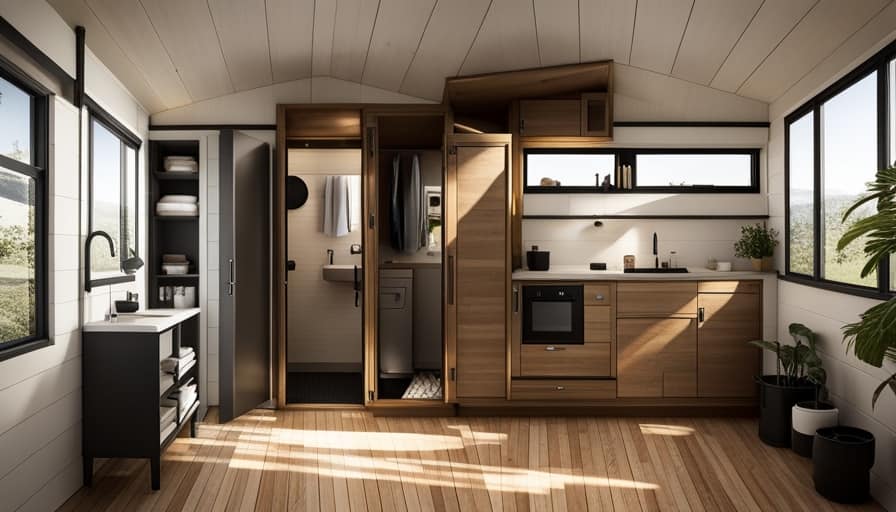
Now, let’s discuss the factors that affect the cost of a tiny house. Size, materials, and customization are the main factors. The larger the size, the more materials and labor will be required, thus increasing the cost. Additionally, using high-quality and sustainable materials can also raise the price. Lastly, customization, such as unique designs or added features, will add to the overall cost.
Exploring Traditional Financing Options
When exploring financing options for a tiny house, it’s important to consider traditional routes such as bank loans or credit unions. These options can provide the necessary funds to purchase or build your dream tiny house. Here are some key points to keep in mind when considering traditional financing options:
-
Traditional bank loans: Many banks offer loans specifically designed for home construction or purchases, which can be used for a tiny house.
-
Personal loans: If you don’t qualify for a traditional bank loan, personal loans from banks or online lenders can be a viable alternative.

-
Interest rates: Traditional financing options may offer competitive interest rates, depending on your creditworthiness and other factors.
-
Repayment terms: It’s important to carefully review the repayment terms of any loan you consider, including the length of the loan and monthly payment amounts.
-
Eligibility requirements: Different lenders have different eligibility criteria, so it’s important to research and compare options to find the best fit for your needs.
Exploring traditional financing options can provide a solid foundation for financing your tiny house.

However, there are also alternative financing options worth considering, which will be explored in the next section.
Exploring Alternative Financing Options
One option to consider when exploring alternative financing options for a tiny house is crowdfunding. Crowdfunding is a method of raising funds by pooling small amounts of money from a large number of people. It can be a viable option for financing a tiny house as it allows individuals to contribute towards the project. Another alternative financing option is personal loans. Personal loans are loans that are not secured by any collateral, such as a house or car. They can be used to finance a variety of expenses, including the construction or purchase of a tiny house. When considering personal loans, it is important to shop around for the best interest rates and terms. Below is a table comparing crowdfunding and personal loans as alternative financing options for a tiny house:
| Financing Option | Pros | Cons |
|---|---|---|
| Crowdfunding | – Can raise funds from others | – No guarantee of reaching goal |
| Personal Loans | – Can be used for any purpose | – May require good credit score |
Both crowdfunding and personal loans can provide alternative financing options for a tiny house. It is important to carefully consider the pros and cons of each option before making a decision.
Tips for Saving and Budgeting for a Tiny House
Saving and budgeting for a tiny house involves prioritizing expenses and finding ways to cut costs. Here are some practical tips to help you save and budget effectively:

- Create a detailed budget: Start by listing all your expenses and income to determine how much you can allocate towards your tiny house.
- Cut unnecessary expenses: Identify areas where you can reduce spending, such as eating out less or canceling unused subscriptions.
- Save consistently: Set aside a certain amount of money each month specifically for your tiny house fund.
- Consider a tiny house loan: Research options for obtaining a loan specifically designed for tiny house financing.
- Explore crowdfunding options: Crowdfunding platforms can help you raise funds for your tiny house project by reaching out to a wider network of supporters.
By implementing these tips, you can make steady progress towards your goal of owning a tiny house.
Now, let’s explore some resources for grants and financial assistance to further support your journey.
Resources for Grants and Financial Assistance
I can explore various resources for grants and financial assistance to help me finance my tiny house. Grants are a great option to consider, as they provide funding that doesn’t need to be repaid.
There are several organizations and programs that offer grants specifically for individuals looking to build or purchase a tiny house. One such resource is the Tiny House Fund, which provides grants to low-income individuals and families for the construction of tiny houses.

Another option is the Housing Assistance Council, which offers grants to organizations that provide housing assistance to low-income individuals.
It’s important to note that grants availability may vary depending on location and eligibility criteria. Therefore, it’s crucial to research and identify grants that align with your specific needs and circumstances.
Frequently Asked Questions
Can I Use a Personal Loan to Finance a Tiny House?
Yes, you can use a personal loan to finance a tiny house. It’s one of the alternative financing options available. However, make sure to research interest rates and terms to find the best option for you.
Are There Any Specific Qualifications I Need to Meet in Order to Obtain a Traditional Mortgage for a Tiny House?
To obtain a traditional mortgage for a tiny house, you need to meet certain qualifying criteria. The application process requires providing necessary documentation, such as income verification and credit history.
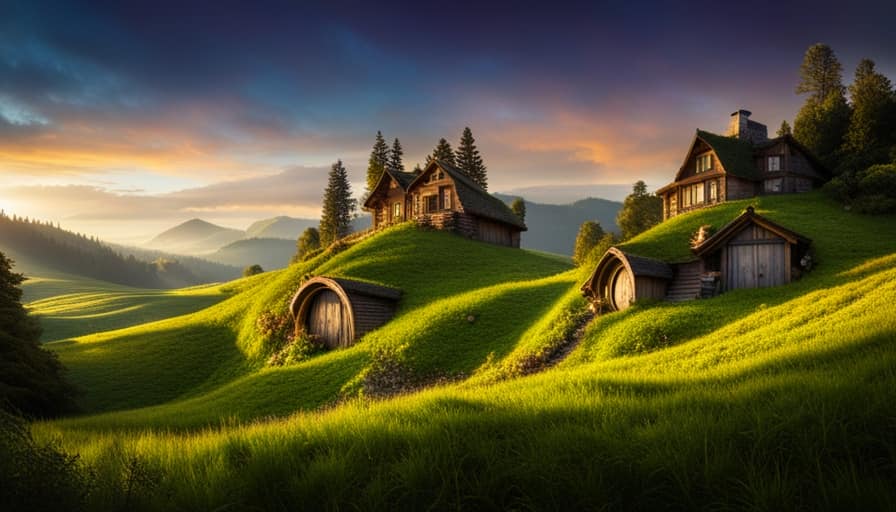
Are There Any Tax Benefits or Incentives Available for Financing a Tiny House?
Tax benefits and incentives can be available when financing a tiny house. It’s important to research and consult with a tax professional to understand the specific benefits that may apply to your situation.
What Are the Advantages and Disadvantages of Using Alternative Financing Options for a Tiny House?
Using alternative financing options for a tiny house has advantages, such as flexibility and lower interest rates, but also disadvantages, like stricter eligibility criteria. It’s important to weigh the pros and cons before deciding.
Are There Any Specific Tips or Strategies for Saving and Budgeting for a Tiny House That Differ From Traditional Homeownership?
When it comes to saving and budgeting for a tiny house, there are some specific tips and strategies that differ from traditional homeownership. Some budgeting strategies include cutting expenses, tracking spending, and setting realistic goals. Additionally, saving techniques like automating savings and finding ways to earn extra income can help you reach your financial goals faster.
Conclusion
In conclusion, financing a tiny house may seem daunting, but with careful planning and research, it can be achievable.

By understanding the costs involved, exploring traditional and alternative financing options, and implementing smart saving and budgeting strategies, you can make your dream of owning a tiny house a reality.
Remember, there are also resources available such as grants and financial assistance programs that can provide additional support.
So don’t let financial barriers hold you back, start exploring your options today and embark on your tiny house journey.
I’m Theodore, and I love tiny houses. In fact, I’m the author of Tiny House 43, a book about tiny houses that are also tree houses. I think they’re magical places where imaginations can run wild and adventures are just waiting to happen.
While tree houses are often associated with childhood, they can be the perfect adult retreat. They offer a cozy space to relax and unwind, surrounded by nature. And since they’re typically built on stilts or raised platforms, they offer stunning views that traditional homes simply can’t match.
If you’re looking for a unique and romantic getaway, a tree house tiny house might just be the perfect option.
Beginners Guides
How Do I Draw a Tiny House
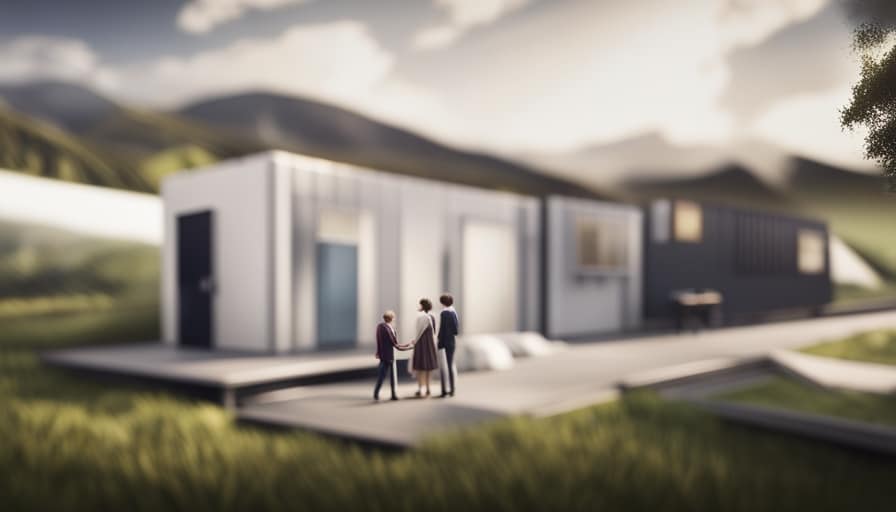
As a future architect, I am constantly captivated by the complexities involved in sketching a small house. It is often said that the beauty lies in the details, and this miniature masterpiece truly exemplifies that sentiment.
In this article, I will guide you through the process of creating a detailed and precise drawing of a tiny house. From understanding the basics of design to adding those finishing touches, you’ll discover how to bring your vision to life on paper.
Let’s dive in and unlock the secrets of drawing a tiny house!
Key Takeaways
- Tiny house design principles prioritize maximizing space in a small footprint and utilizing multi-functional spaces.
- Accurate measurements and choosing the appropriate scale are crucial for a precise and realistic representation.
- Sketching out the layout and floor plan should consider unique storage solutions, placement of windows for natural light, and attention to detail and proportions.
- Adding detail to tiny house elevations can be done by selecting the perfect color palette, incorporating unique architectural elements, and considering light, neutral tones or bold, vibrant colors.
Understanding the Basics of Tiny House Design
As I begin to draw a tiny house, I must first understand the basics of its design. Tiny house design principles are centered around maximizing space in a small footprint. When designing a tiny house, it’s crucial to carefully consider every inch of the layout.

One key principle is to prioritize multi-functional spaces. Each area should serve multiple purposes, such as a living room that can also convert into a bedroom. Storage is another important aspect, with clever solutions like built-in cabinets and hidden compartments. Additionally, utilizing vertical space through lofted areas or tall shelving can help maximize storage and living areas.
Choosing the Right Scale for Your Tiny House Drawing
I should consider the size and dimensions of my tiny house when choosing the right scale for my drawing. Accurate measurements are crucial in creating a precise and realistic representation of my tiny house. By using the correct scale, I can ensure that every element of the design is accurately depicted.
Exploring different design elements for my tiny house scale drawings allows me to experiment with various layouts and configurations. This not only helps me visualize the final result, but also enables me to make informed decisions regarding the placement of furniture, appliances, and other features.
Once I’ve determined the appropriate scale, I can confidently move on to sketching out the layout and floor plan, bringing my tiny house design to life.

Sketching Out the Layout and Floor Plan
Once I’ve chosen the right scale for my tiny house drawing, it’s important to start sketching out the layout and floor plan.
To ensure an efficient use of space, I’ll incorporate unique storage solutions. This can include built-in shelving, hidden compartments, and multi-functional furniture.
Additionally, I’ll carefully consider the placement of windows for optimal natural light. This won’t only enhance the overall ambiance of the tiny house but also reduce the need for artificial lighting during the day.
By strategically positioning windows in areas where sunlight is abundant, I can create a bright and airy atmosphere.

It’s crucial to prioritize both functionality and aesthetics when sketching out the layout and floor plan of a tiny house.
Adding Detail to Your Tiny House Elevations
While adding detail to my tiny house elevations, I’ll focus on incorporating architectural elements that enhance the overall design and character of the house.
One important aspect to consider is selecting the perfect color palette for your tiny house design. The colors you choose can greatly impact the visual appeal and atmosphere of your tiny home. Consider using light, neutral tones to create a spacious and airy feel, or bold and vibrant colors to add a pop of personality.
In addition to color, incorporating unique architectural elements into your tiny house elevation can make it stand out. Whether it’s a charming bay window, a decorative trim, or an interesting roofline, these elements can add visual interest and character to your tiny home.

By carefully selecting colors and incorporating unique architectural elements, you can create a tiny house elevation that’s both visually appealing and reflective of your personal style.
Now, let’s move on to finalizing your tiny house drawing with finishing touches.
Finalizing Your Tiny House Drawing With Finishing Touches
Adding decorative details and selecting the right materials are key steps in finalizing your tiny house drawing with finishing touches. To ensure your tiny house design truly stands out, consider the following:
-
Selecting the perfect color palette: Choose colors that reflect your personal style and create an inviting atmosphere. Consider using light and neutral tones to make the space feel larger, or vibrant shades to add a pop of energy.

-
Incorporating sustainable and eco-friendly elements: Make your tiny house environmentally friendly by incorporating features such as solar panels, rainwater harvesting systems, and energy-efficient appliances. Use recycled or reclaimed materials whenever possible to reduce waste and minimize your environmental footprint.
-
Adding unique architectural details: Consider incorporating unique architectural elements like exposed beams, arched windows, or a charming front porch to give your tiny house character and charm.
-
Enhancing with landscaping: Don’t forget about the exterior! Enhance your tiny house design with landscaping elements such as flower beds, shrubs, or a small vegetable garden. This will add curb appeal and create a welcoming outdoor space.
Frequently Asked Questions
What Are Some Common Challenges or Obstacles to Consider When Designing a Tiny House?
When designing a tiny house, it is important to consider common challenges and obstacles such as space optimization and design challenges. These factors require precise planning and attention to detail to ensure optimal functionality and livability.
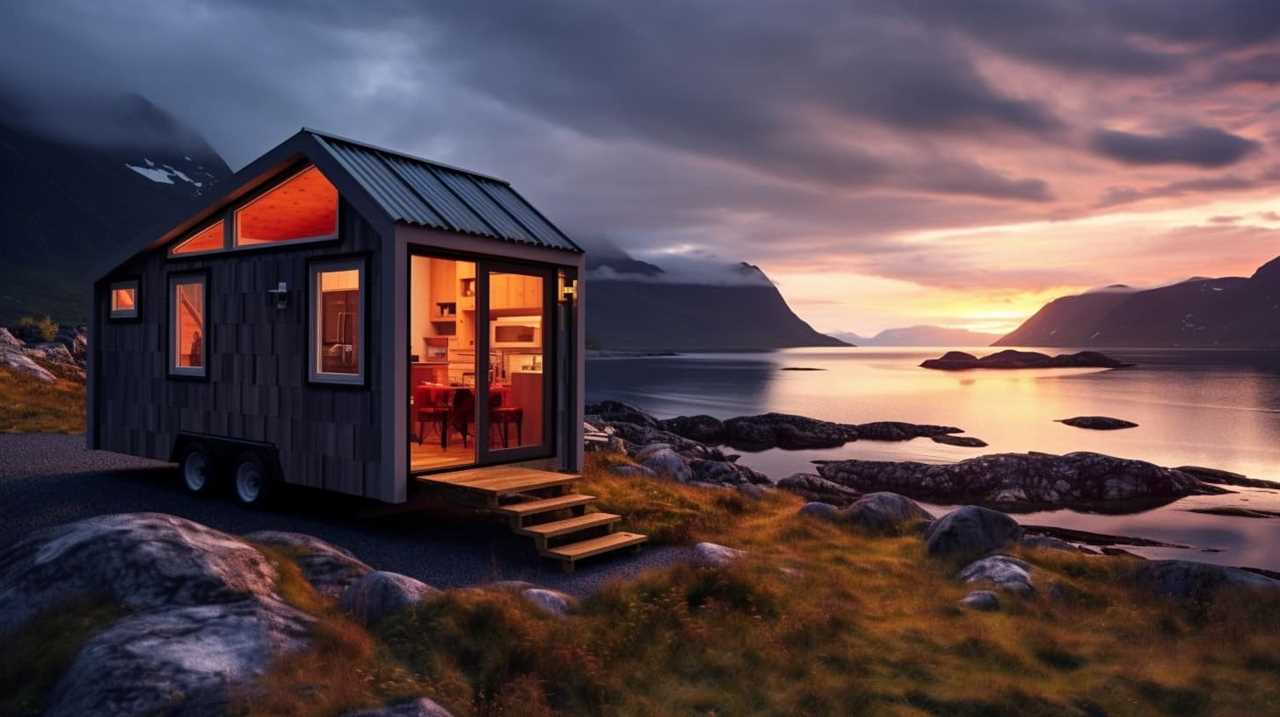
Can I Use Software or Online Tools to Create My Tiny House Drawing?
Yes, you can use software or online tools to create your tiny house drawing. It is best to follow these practices for creating detailed designs: utilize accurate measurements, incorporate necessary features, and ensure proper scaling for a realistic representation.
Are There Any Specific Building Codes or Regulations That I Should Be Aware of When Designing a Tiny House?
When designing a tiny house, it is important to be aware of building code requirements and zoning restrictions. These regulations ensure the safety and legality of your structure, so it’s crucial to familiarize yourself with them before starting your design process.
How Do I Incorporate Sustainable and Eco-Friendly Features Into My Tiny House Design?
To incorporate sustainable and eco-friendly features into my tiny house design, I can use eco-friendly materials like reclaimed wood and recycled insulation. Additionally, I can install energy-efficient systems such as solar panels and a rainwater harvesting system.
Are There Any Recommended Resources or Communities for Further Inspiration and Support in Designing a Tiny House?
There are recommended resources and communities for inspiration and support in tiny house design. Check out tiny house design competitions and online forums for enthusiasts. They provide valuable insights and connections for your project.

Conclusion
In conclusion, drawing a tiny house requires understanding the basics of design, choosing the right scale, and sketching out the layout and floor plan.
By adding detail to the elevations and finalizing the drawing with finishing touches, you can create a precise and detailed representation of your dream tiny home.
Just like a skilled architect carefully crafts a blueprint, your tiny house drawing will serve as the foundation for turning your vision into reality.
I’m Theodore, and I love tiny houses. In fact, I’m the author of Tiny House 43, a book about tiny houses that are also tree houses. I think they’re magical places where imaginations can run wild and adventures are just waiting to happen.
While tree houses are often associated with childhood, they can be the perfect adult retreat. They offer a cozy space to relax and unwind, surrounded by nature. And since they’re typically built on stilts or raised platforms, they offer stunning views that traditional homes simply can’t match.
If you’re looking for a unique and romantic getaway, a tree house tiny house might just be the perfect option.
Beginners Guides
How Do I Find a Tiny House for Sale for Adults

I’m always searching for the ideal tiny home. It feels like finding a needle in a haystack, but with the right approach, it can be done.
In this article, I’ll guide you through the process of finding a tiny house for sale that’s perfect for adults. From exploring online listings to connecting with builders and attending workshops, you’ll discover all the tips and tricks to make your dream of owning a tiny house a reality.
Let’s get started!
Key Takeaways
- The internet offers a wide range of options for finding tiny houses for sale, with online listings providing information on financing options and customization choices.
- Connecting with builders and companies can provide valuable information on purchasing and customizing a tiny house, as well as guidance on building regulations and permits.
- Utilizing social media and online communities can help tap into a network of like-minded individuals, gain recommendations, and access valuable insights and resources from the tiny house community.
- Attending workshops and events can provide education on financing options, networking opportunities, and exposure to the latest trends and designs in the tiny house community.
Exploring Online Listings and Websites
I can start my search for a tiny house by browsing through online listings and websites. The internet offers a vast array of options when it comes to finding a tiny house for sale. Not only can I explore different listings, but I can also learn more about the financing options available for tiny homes.

Many websites provide information on loans, grants, and other financial resources that can help make owning a tiny house a reality. Additionally, these online platforms showcase a variety of tiny house designs and customization options, allowing me to find a home that suits my preferences and needs.
Connecting With Tiny House Builders and Companies
By reaching out to tiny house builders and companies, I can explore my options and gather more information about the process of purchasing and customizing a tiny house. These professionals have extensive knowledge and expertise in building tiny houses and can guide me through the entire process.
When connecting with them, it’s important to inquire about building regulations to ensure that my tiny house meets all the necessary requirements. They can provide valuable insights and advice on navigating through the complexities of local zoning laws and permits.
Additionally, they can also offer information on financing options, such as loans or payment plans, to help make owning a tiny house more accessible.
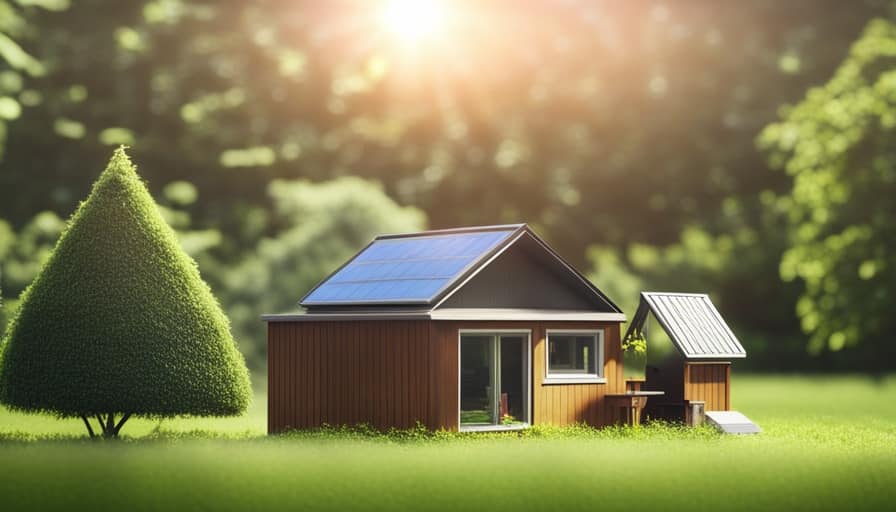
Utilizing Social Media and Online Communities
One can utilize social media and online communities to connect with fellow tiny house enthusiasts and discover potential listings for tiny houses for sale. Joining local groups on platforms like Facebook or Reddit can provide a wealth of information and resources. These groups often have members who are actively involved in the tiny house community and can offer valuable insights and recommendations. Engaging with these communities allows you to tap into a network of individuals who share your passion for tiny living and can guide you towards finding the perfect tiny house for sale.
Don’t hesitate to ask for recommendations within these groups, as members are usually more than willing to share their experiences and knowledge. By leveraging the power of social media and online communities, you can greatly increase your chances of finding the ideal tiny house for sale.
Now that we’ve explored the benefits of utilizing social media and online communities, let’s delve into the next step of the process – attending tiny house workshops and events.
Attending Tiny House Workshops and Events
To expand your knowledge and network in the world of tiny houses, consider attending workshops and events that focus on this unique lifestyle. These gatherings provide valuable opportunities to learn from experts, connect with like-minded individuals, and gain insight into the latest trends and innovations in the tiny house community. Here are three reasons why attending these workshops and events is beneficial:

-
Education: Workshops and events offer a wealth of information on various topics, including tiny house financing options. You can learn about different financing methods, such as loans, grants, and crowdfunding, to help make your tiny house dream a reality.
-
Networking: Meeting fellow enthusiasts and professionals in the industry is a great way to expand your network. You can exchange ideas, share experiences, and potentially find partners or mentors who can guide you through the process of building a tiny house on a foundation.
-
Inspiration: By attending workshops and events, you’ll be exposed to a wide range of tiny house designs and styles. This exposure can inspire you to think creatively and find innovative solutions for your own tiny house project.
Considering Alternative Options for Tiny House Living
I’ve explored various tiny house options, but my favorite alternative is living in a converted shipping container. Not only are shipping containers affordable and readily available, but they also provide a unique and eco-friendly living space.

One of the best aspects of living in a converted shipping container is the opportunity to join tiny house communities. These communities are designed to foster a sense of connection and support among residents, creating a tight-knit community where everyone looks out for each other.
Additionally, renting options for converted shipping containers are becoming more popular, allowing individuals to experience the benefits of tiny house living without the commitment of purchasing a property. This flexibility is perfect for those who want to try out the lifestyle before fully committing.
Frequently Asked Questions
Are There Any Specific Regulations or Zoning Requirements for Placing a Tiny House on a Property?
Regulations and zoning requirements vary depending on the location. Before placing a tiny house on a property, it is important to research and comply with local laws. Consulting with a real estate professional can provide guidance in navigating these regulations.
What Are Some Common Challenges or Considerations When It Comes to Financing a Tiny House?
When it comes to financing a tiny house, there are several challenges to consider. Affordability is a major concern, as well as finding lenders who understand the unique nature of tiny homes.

Can I Customize or Personalize a Pre-Built Tiny House From a Builder?
Yes, you can customize or personalize a pre-built tiny house from a builder. It allows you to tailor the design and features to your preferences, making it a unique and personalized space.
Are There Any Specific Insurance Considerations for Owning a Tiny House?
Insurance coverage for tiny houses requires considering their unique features and potential risks. It’s important to research insurance providers who specialize in tiny house coverage to ensure you have the right protection for your investment.
How Do I Navigate the Process of Finding Land or a Community to Park My Tiny House In?
Finding land or a community to park my tiny house in can be challenging. Research online platforms, local real estate agents, and tiny house communities. Visit potential locations, ask questions, and consider factors like zoning regulations and amenities.
Conclusion
In conclusion, there are several ways to make finding a tiny house for sale for adults easier. These include exploring online listings and websites, connecting with builders and companies, utilizing social media and online communities, and attending workshops and events.

One effective method is to search for tiny houses for sale through online listings and websites. There are dedicated platforms that specialize in listing tiny houses, making it convenient to browse through various options and compare prices and features.
Another option is to connect directly with builders and companies that specialize in constructing and selling tiny houses. Many builders have websites where they showcase their designs and provide information on how to purchase or customize a tiny house according to specific needs and preferences.
Utilizing social media and online communities can also be helpful in finding a tiny house for sale. There are groups and pages dedicated to tiny house living where individuals can connect with others who are selling or buying tiny houses. These platforms provide a space for sharing information, asking questions, and even finding potential sellers or buyers.
Attending workshops and events related to tiny house living is another valuable way to find a tiny house for sale. These events often feature displays of different tiny house designs and provide an opportunity to meet builders, sellers, and other individuals who are passionate about tiny house living.

It’s interesting to note that the popularity of tiny house living is on the rise. According to a survey conducted by Tiny House Community, the number of adults opting for tiny house living has increased by 67% in the past five years. This statistic highlights the growing appeal and interest in this alternative lifestyle.
Overall, by utilizing online resources, connecting with builders and companies, engaging with social media and online communities, and attending workshops and events, adults can make the search for a tiny house for sale much easier.
I’m Theodore, and I love tiny houses. In fact, I’m the author of Tiny House 43, a book about tiny houses that are also tree houses. I think they’re magical places where imaginations can run wild and adventures are just waiting to happen.
While tree houses are often associated with childhood, they can be the perfect adult retreat. They offer a cozy space to relax and unwind, surrounded by nature. And since they’re typically built on stilts or raised platforms, they offer stunning views that traditional homes simply can’t match.
If you’re looking for a unique and romantic getaway, a tree house tiny house might just be the perfect option.
-

 Beginners Guides1 week ago
Beginners Guides1 week agoHow To Buy A Tesla Tiny House
-

 Energy Efficiency1 month ago
Energy Efficiency1 month agoBest Tiny Homes For Cold Climates
-

 Beginners Guides5 days ago
Beginners Guides5 days agoTiny House Nation Where Are They Now Stephanie
-

 Tiny House Resources (e.g., legalities, cost, insurance, FAQs)2 months ago
Tiny House Resources (e.g., legalities, cost, insurance, FAQs)2 months agoDo Tiny Homes Need Planning Permission?
-

 Beginners Guides2 weeks ago
Beginners Guides2 weeks agoFrom The Show Tiny House Nation How Many Keep Their Tiny House?
-

 Beginners Guides2 months ago
Beginners Guides2 months agoUsing a Climbing Net For Treehouse Construction
-

 Beginners Guides2 months ago
Beginners Guides2 months agoHow to Build a Treehouse Without Drilling Into the Tree
-
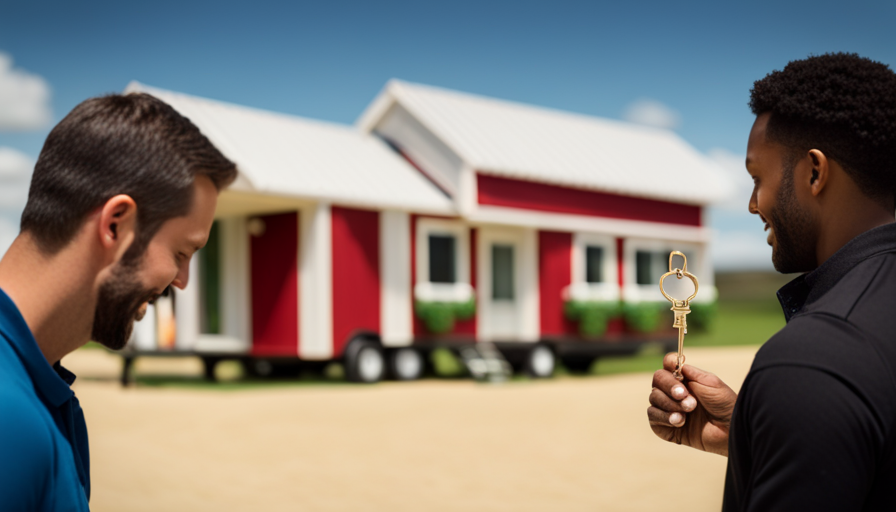
 Beginners Guides3 weeks ago
Beginners Guides3 weeks agoTiny House Nation Who Pays For The Houses













